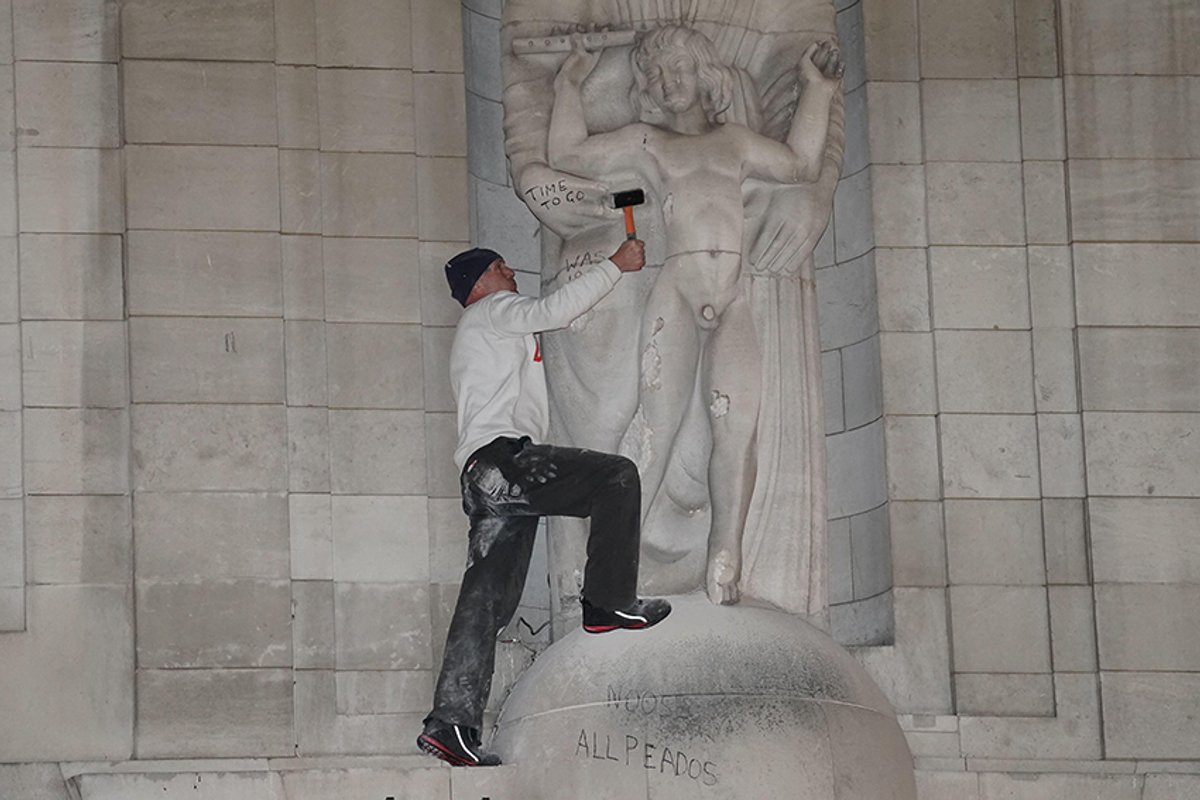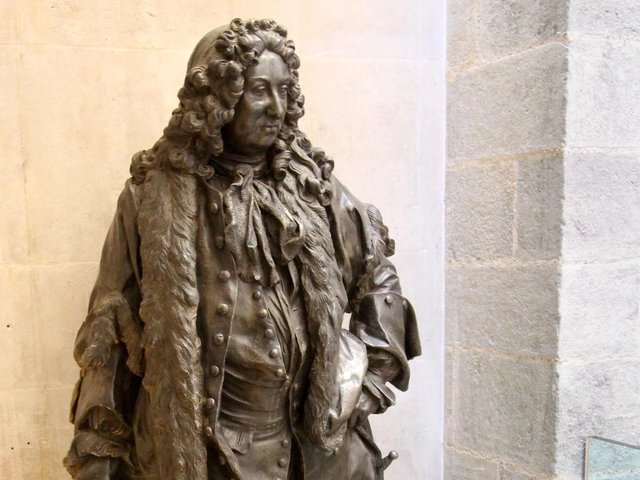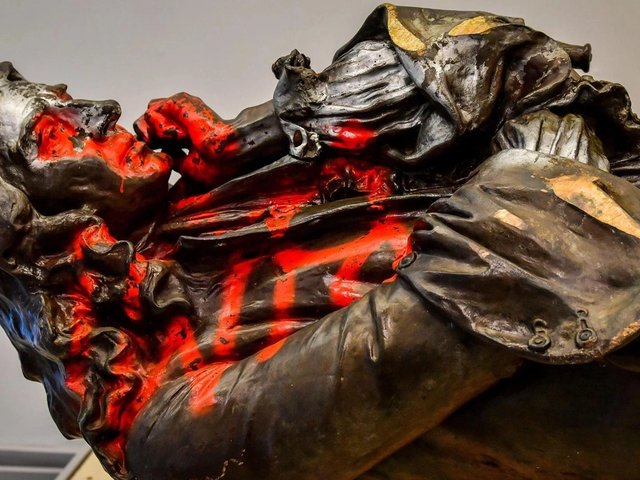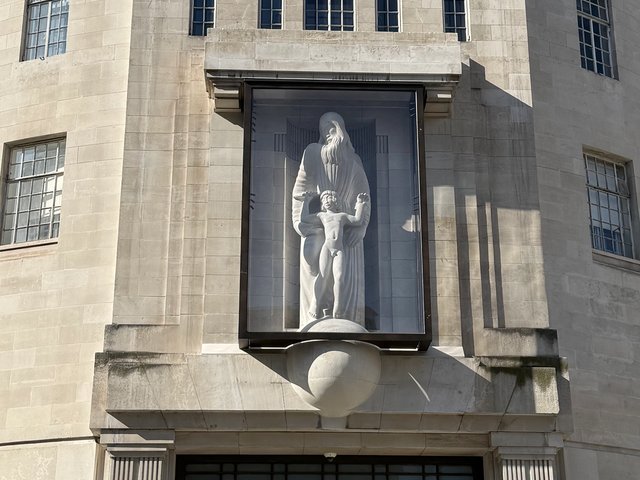A man was arrested on suspicion of criminal damage last night after spending four hours attacking an Eric Gill sculpture with a hammer installed outside BBC Broadcasting House in central London.
Another man, who had filmed what happened, was arrested on suspicion of conspiracy to commit criminal damage. The Metropolitan police say they are “liaising with the CPS [Crown Prosecution Service],” but no charges have been brought yet.
Gill, who died in 1940, is well-known as a paedophile who left details in his diary of his “sexual abuse of his daughters, sisters and dog”, according to a biography on the Tate’s website.
The BBC statue was commissioned by then director-general Sir John Reith in the early 1930s, though no one seems to know exactly why Leith chose this image, of Prospero and Ariel from Shakespeare’s The Tempest. However, the fact the sculpture features a naked child has been added cause for concern for campaigners who have called for its removal.
The BBC says there are no plans to take down the statue after the attack. A statement says: “When the statue was commissioned, Ariel—as the spirit of the air—was seen as an appropriate symbol for the new dawn of broadcasting.”
It adds: “The BBC doesn’t condone the views or actions of Eric Gill. Clearly there are debates about whether you can separate the work of an artist from the art itself. We think the right thing to do is for people to have those discussions. We don’t think the right approach is to damage the artwork itself.”
The BBC dropped Gill Sans as its official font earlier this year.
For decades, campaigners have called on the BBC to remove the statue, which they have described as “a monument to paedophilia”. Meanwhile, in 1998, campaigners from Ministers and Clergy Sexual Abuse Survivors appealed for Gill’s Stations of the Cross to be removed from Westminster Cathedral.
In recent years, exhibitions of Gill’s work have questioned how far his life should affect our judgment of his work. But the current culture wars have once again shone a spotlight on such deeply problematic imagery.
Katie Razzall, the culture editor for BBC news, tweeted a video of the incident yesterday, writing: “Outside BBC right now a man is trying to smash up Eric Gill statue while another man live streams talking about paedophiles. Gill’s horrific crimes are well known. But is this the way?”
Outside BBC right now a man is trying to smash up Eric Gill statue while another man live streams talking about paedophiles. Gill’s horrific crimes are well known. But is this the way? pic.twitter.com/IzFUBIJfwT
— Katie Razzall (@katierazz) January 12, 2022
The Times columnist David Aaronovitch responded: “No it bloody isn’t. Gill was a sexual monster, just as Wagner was a virulent anti-Semite. But that sculpture is genuine art and this man is a vandal.”
The incident comes a week after a jury cleared four people of criminal damage after they toppled a statue of slave trader Edward Colston in Bristol in June 2020. Comparisons have been swiftly drawn, with many speculating the acquittal would lead to more statues being vandalised.
However, others say it is a moot point to compare the two. Ash Sarkar, a contributing editor for Novara Media, says on Twitter: “The Eric Gill statue has less in common with Colston than it does the ongoing veneration of abusers in the art world."





